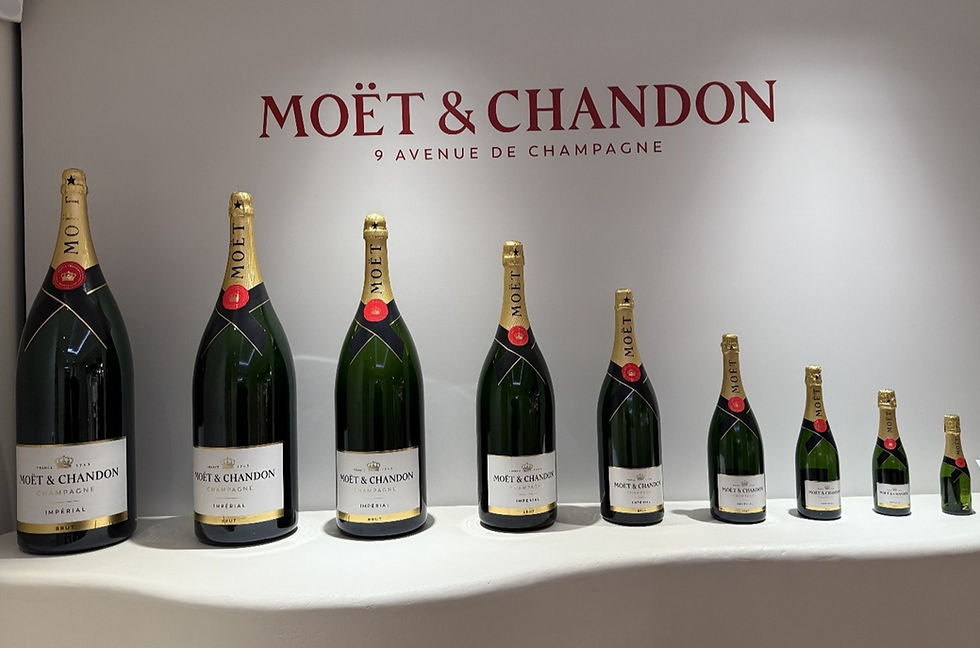Four Big Surprises About the Finger Lakes Wine Region
- Marla
- Jul 29, 2024
- 4 min read

New York’s Finger Lakes wine region is North America’s cool-climate region, with a history of winemaking dating back to 1829. Located in the Northwest part of the state roughly between Ithaca and Rochester, it comprises a group of deep, narrow lakes running North to South carved by glaciers thousands of years ago. The lakes create a “lake effect” that influences the grape growing and the wine.
“The temperature changes from 85 degrees to 45 degrees at night because of the lakes, so the vines shut down at night, which preserves the acidity of the wine,” explained Josh Wig, vice president of winery operations at Lamoreaux Landing Wine Cellars, on Seneca Lake.
The resulting wines, similar to those in Germany and Alsace-Loraine, are known for their crisp, refreshing style with high acidity and minerality.
But while many people have heard of the region, they may have limited or preconceived notions about the wines, especially since only a few of them can be found outside of New York State. Many of the wineries in the Finger Lakes wine region are small family-owned and operated. They are hoping to increase their visibility and distribution.
Doug and I recently attended a Finger Lakes walk-around wine tasting “roadshow” featuring 10 wineries from the region, sponsored by the Finger Lakes Wine Alliance. We were able to sample 45 different tasty and interesting wines. They were also for the most part reasonably priced from $13-$30 a bottle, a great value for the quality.
It opened my eyes regarding what the region has to offer. Here are four big surprises about the Finger Lakes wine region.
1. It’s Significantly Bigger than People Realize
The number of wineries in the Finger Lakes wine region was a revelation. There are almost 150 of them, many of which can be found along four different wine trails: (1) Cayuga Lake (the oldest wine trail in the country), (2) Keuka Lake, (3) Seneca Lake, and (4) Canandaigua Lake, a smaller wine trail. In contrast, New York’s Hudson River wine region, which is about the same size, has only 59 wineries; there are just over 50 wineries on Long Island’s North Fork.
Also, the lakes are long and narrow. Even if two wineries are on the same lake and wine trail, they may be quite a way from each other. So if you’re going to map out a visit to the Finger Lakes wine region, you need to factor in the distances.

"It takes an hour to get around Seneca Lake. So two miles by the crow is not the same as by the road. And there are not a lot of Ubers. Know you have a ride,” said Alex Jankowski, VP of Brand Development for Wagner Vineyards.
2. The Region Produces a Surprisingly Diverse Variety of Wines
Yes, the prominent varietals that the Finger Lakes wine region is known for are Riesling, Chardonnay, Gewurztraminer, Cabernet Franc, and Pinot Noir. There is also a fair amount of sweet, rosé, and sparkling wine.

But the wineries also produce some wine that may surprise you. For instance, Dr. Konstanin Frank Winery, on Keuka Lake, is the leading producer in America of Rkatsiteli, a white grape from the Republic of Georgia. Sheldrake Point Winery on Cayuga Lake produces a Gamay Noir, the first winery in the region to do so, according to Christine Maguire, its general manager. Some wineries are producing wines I had not tried before, such as Blaufrankisch, a red originally from Austria, being made by Heron Hill Winery near Keuka Lake.
“It’s not all Riesling and Chardonnay,” noted Chad Hendrickson, with Lakewood Vineyards, on Seneca Lake.
3. The Bonds Between the Wineries are Particularly Strong
I was not expecting to hear how supportive the wineries are of each other. While there’s certainly a collaborative spirit in other wine regions, the Finger Lakes wine region seems to take it to a higher level. At least four of the 10 winery representatives we met made a point of highlighting the “amazing” collaboration they enjoyed.
“There’s a big sense of community,” said Cole Wilson, owner of Knapp Winery, near Cayuga Lake.
One winery owner told us that not long ago a harvester died while working in his vineyard, and the owner of nearby Buttonwood Grove Winery came right over and helped finish the harvest.

4. The Region is Experiencing a Transformation
The Finger Lakes is not suddenly becoming a different wine region, but it is in the process of innovation and evolving, in some ways exponentially, according to several of the wine owners.
For instance, many of the wineries are experimenting with different grape varieties, moving away from the production of sweet wines, and bringing in new winemakers. It thus makes sense that the wineries want to get the word out and expand.
“There are some really wonderful wines and winemakers. I’m excited to see where it goes,” said Maguire.
We hope this information on four big surprises about the Finger Lakes wine region spurs you to try some of the area’s wines you may not have tasted before. If you have any additional info about the region, please share! We’re at info@winewithourfamily.com.
One thing that’s not surprising: Doug and I were impressed and are putting this region down as one to visit in the near future.
Lede photo courtesy of Finger Lakes Wine Country. Map: Credit newyorkwines.org
If you enjoyed this post, visit our website and take a look at some of our related articles:




Comments